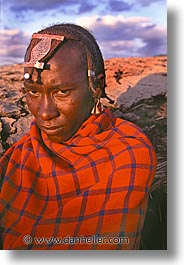A New Missional Network … A New Generation of Cooperation

I’ve mentioned in previous posts the cooperative situation in which my church functions. Like a large and growing number of newly planted Southern Baptist churches, we are not affiliated with a local association. We do cooperate on a modest level through our state convention. Currently, the majority of our missions dollars are being invested in a four-year international partnership to plant churches among the Pachitea-Panao Quechua people of the Andes Mountains in Peru. While we remain Southern Baptist in our doctrine, we tend to take more of a “point-of-contact” approach to our missions giving. Our people want to see where their missions dollars go. They want to see and touch the impact of their missions giving in a personal way. They are not satisfied with, nor supportive of, sending all of their missions offerings to a centralized Baptist fund.
But, lately, I have felt led to involve our people in a more direct involvement in church planting and missions in North America. I want us to get involved in planting strong evangelical churches in places where there are no churches. I wonder … how many more churches can we plant in the suburbs of Atlanta? What about those places where people have basically no access to the Gospel of Jesus Christ … none at all? You know … those places where it just doesn’t work to run a couple of ads in the newspaper, do a bulk mailer, and have 200 people in attendance within four weeks. What about the places where the spiritual landscape is cold and dark … the Shadowlands of North America?
My friend and Mission M Possible ministry partner, Roger Ferrell, has also struggled with this same desire. In fact, he’s been doing something about it. Roger has been doing some research over the fast few months, trying to locate those places in North America where there is little or no Gospel access … places where there are no solid, evangelical churches. It hasn’t been easy. Our denomination (interestingly) has no information on this at all. But,believe it or not, these places do exist. Many are in Canada, but there are also some completely unchurched communities in the United States, as well.
So, Roger developed the idea for a new missional network (well, I helped a little bit) that we want to call The Shadowlands Project. Here’s our idea, in a nutshell:
- Locate and target the most unchurched communities in North America.
- Target one community at a time for the planting of a healthy, doctrinally sound, evangelical church.
- Locate missional churches willing to invest in a network which has the sole purpose of planting churches in the those communities.
- Invite those churches to invest, financially, in the support of a church planting family and/or team to relocate to that community and begin the planting of a healthy church.
- Challenge those churches to invest a portion their North American missions volunteer efforts in the support of that new church plant.
- Provide Church Planting training events and missions experiences for church groups through our “training wing” of the network, Mission M Possible.
- Once the church planting task in that community is complete, shift the focus of the network to the next community on the Shadowlands strategic list.
We think this may be a new level … a new generation … of Baptist cooperation. It could be an especially attractive missional network for the rapidly increasing plethora of non-associational Southern Baptist churches. This could also be an effective, inexpensive way for new church plants to immediately and directly get involved in planting new churches and rapidly get church planting established in the “DNA” of that new church.
For the record … Roger and I are both lifelong Southern Baptists, but we will certainly welcome the input and cooperation of like-minded and like-hearted believers from other denominations or non-denominations. We just want to plant churches. We just want to be a part of a huge, difficult, challenging vision. But we do envision that this will be something that many Southern Baptist churches will be able to “wrap their minds and hearts around.”
We’re not asking anyone to abandon any association or group that they are a part and to which they are faithful. We simply want to offer a cutting-edge, “missions frontier,” point-of-contact missional network for churches that are up for the challenge. This won’t be easy. It won’t be something that someone can just mail a check to and then forget about it. The Shadowlands Project will require a real, hands-on, practical missions commitment.
Just think … if we could get just 50 churches to pledge support of just $1,000 per year, we could fund a church planting family (and perhaps another team member) in a manner that is generous and responsible. Not with a meager, insulting, welfare-level pittance of supplemental support. We could support a family with a livable salary until the church was established. We could give a church planter on the “last frontier” in North America the support of a strong and viable network. We could greatly increase this man’s opportunity for a successful, thriving ministry.
What do you think? Would your church be interested in The Shadowlands Project? Give us some input. If you’re interested in becoming a part of this new network and vision,please send me an e-mail with your phone number on it. Roger or I would love to talk to you about it.
Labels: Church Planting, Missional Network, Missions, North America






